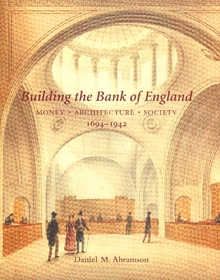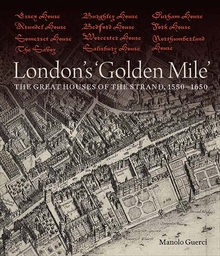Building the Bank of England
WARNING
You are viewing an older version of the Yalebooks website. Please visit out new website with more updated information and a better user experience: https://www.yalebooks.com
Money, Architecture, Society 1694-1942
Daniel M. Abramson
The Bank of England symbolizes the economic strength, influence, and potency of Britain. Founded in 1694, its world-famous buildings were built and rebuilt four times by different architects, most notably Sir John Soane. The Bank’s three-and-aquarter-acre complex has included elegant public banking halls and private offices, courtyards and gardens, warehouses and vaults, residential apartments and guards’ barracks. This lavishly illustrated book examines for the first time the entire architectural history of the Bank from the seventeenth through the twentieth centuries.
Drawing on a variety of perspectives, the book relates the history of the Bank of England to current debates on English economic, social, and urban history, including issues of national identity, mercantile politics, and the commercialization of culture. The book also shows how the building itself has expressed various historical tensions among the Bank’s inhabitants and publics: its directors and detractors, its clerks and clientele, its tourists, and even its mob attackers.
Published for the Paul Mellon Centre for Studies in British Art
Daniel M. Abramson is associate professor of architectural history and director of architectural studies at Tufts University.
"...[an] exhaustive study of the Bank's evolution...a classic."—Andrew Mead, AJ
“A major undertaking and a comprehensive look into the interconnection between architectural design and social history, this volume will stand as a standard in the study of architecture for some time to come.”—Art Times
'This book is magnificently documented and sumptuously produced and illustrated, making it a key reference book for every stage of the bank's architecture... I longed for more.' - Marcus Binney, Country Life
'Although this admirable book is primarily a lavishly illustrated architectural history, Abramson's approach to his topic gives insight into institutional character formation, from the interplay of its governance to the evolution of its role within the national economy.' - Gillian Darley, The Times Literary Supplement
Publication Date: November 10, 2005
Publishing Partner: Published for the Paul Mellon Centre for Studies in British Art
180 b/w + 77 color illus.








